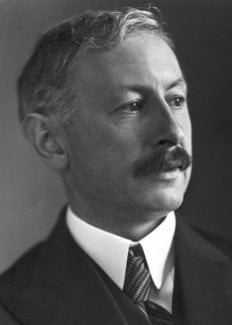Paul Karrer
Biographical

Paul Karrer was born in Moscow on April 21, 1889. His parents, Paul Karrer and Julie Lerch, were Swiss nationals and in 1892 the family returned to Switzerland where he received his early education at Wildegg and at the grammar school in Lenzburg, Aarau, where he matriculated in 1908. He studied chemistry at University of Zurich under Professor Alfred Werner and after gaining his Ph.D. in 1911, he spent a further year as assistant in the Chemical Institute. In 1912 he took a post as chemist with Paul Ehrlich at the Georg Speyer Haus, Frankfurt-am-Main; he left Frankfurt six years later on his election as reader at University of Zurich. In 1919 he became Professor of Chemistry and Director of the Chemical Institute.
His early researches involved the preparation and investigation into the properties of complex metal compounds but his most important work has concerned plant pigments, particularly the yellow carotenoids. He was responsible for elucidating the chemical structure of the carotenoids and he also showed that some of these substances are transformed in the animal body into vitamin A. His work in this field led, in 1930, to the establishment of the correct constitutional formula for b-carotene, the chief precursor of vitamin A; this, the first time that the structure of a vitamin or provitamin had been established, in turn led to the clarification of the structure of vitamin A itself. Later, he confirmed the structure ascribed to ascorbic acid (vitamin C) by Albert von Szent-Györgyi and he extended his researches into the vitamin B2 and E fields. His important contributions to the chemistry of the flavins led to identification of lactoflavin as part of the complex originally thought to be vitamin B2.
Professor Karrer has published over 1,000 scientific papers in the various fields of organic chemistry, especially concerning vitamins A, B2, C, E and K, co-enzymes, carotenoids and other plant pigments, curare and other alkaloids, amino acids, carbohydrates and organo-arsenic compounds. His Lehrbuch der Organischen Chemie (1930) has passed through 13 editions and has been translated in full into English, Italian, Spanish, French, Polish and Japanese. His monograph on carotenoids (1948) has also been translated into English.
Karrer was President of the 14th International Congress on Pure and Applied Chemistry (Zurich, 1955). He has received honorary doctorate degrees from universities in Europe and America; they include Dr.med. Basle, Breslau, Lausanne and Zurich; Ph.D. Lyons, Paris, Sofia, London, Turin, Brussels and Rio de Janeiro; and Dr.Pharm. Madrid and Strasbourg. He has been awarded the Marcel Benoist Prize and the Cannizzaro Prize and he is a full member or honorary, corresponding or associate member of numerous chemical and biochemical societies throughout the world. These include the Academie des Sciences (Paris); the Royal Society (London); National Academy of Science (Washington); Royal Academy of Sciences (Stockholm); the National Academy (Rome); Royal Academy of Belgium; the Indian Academy of Science; the Royal Netherlands Academy of Sciences, and the Chemical Societies of Britain, France, Germany, Belgium, India and Austria.
Karrer married Helena Froelich in 1914. They have two sons.
This autobiography/biography was written at the time of the award and first published in the book series Les Prix Nobel. It was later edited and republished in Nobel Lectures. To cite this document, always state the source as shown above.
Paul Karrer died on June 18, 1971.
Nobel Prizes and laureates
Six prizes were awarded for achievements that have conferred the greatest benefit to humankind. The 12 laureates' work and discoveries range from proteins' structures and machine learning to fighting for a world free of nuclear weapons.
See them all presented here.
